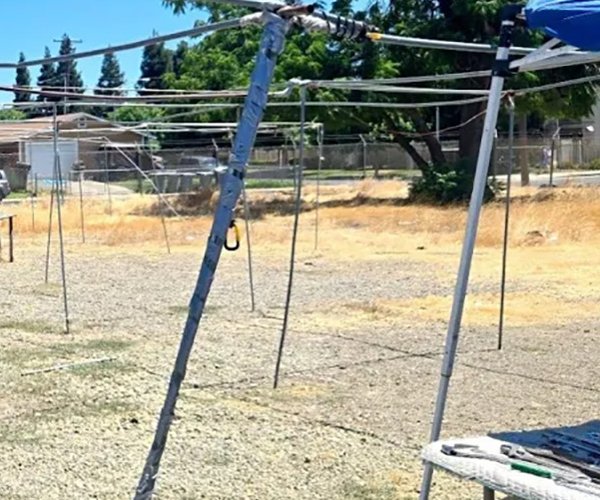Governor Gavin Newsom last week submitted his 2021-22 State Budget proposal to the Legislature – a record $227.2 billion fiscal blueprint that is a staunch reversal from summer fears of a drop in California revenue.
The proposal provides funding for immediate COVID-19 response and relief efforts where Californians need it most while making investments for an equitable, inclusive and broad-based economic recovery. The Budget has benefited from stock market gains and income growth among the state’s wealthiest residents, which paints a picture of disconnect between California’s affluent and those who are struggling due to COVID-19.
“In these darkest moments of the COVID-19 pandemic, this Budget will help Californians with urgent action to address our immediate challenges and build towards our recovery,” Newsom said in a statement. “As always, our Budget is built on our core California values of inclusion, economic growth and a brighter future for all. The Budget makes progress towards the goal I set when taking office to harness California’s spirit of innovation and resilience and put the California Dream within reach of more Californians. I look forward to working with the Legislature to enact these critical immediate and longer-term priorities for our state for the 40 million who call the Golden State home.”
With the end of the COVID-19 pandemic in sight, the Governor’s Budget prioritizes key actions that will urgently help the California families and businesses impacted most. It proposes $372 million to speed up administration of vaccines across all of California’s 58 counties, bolstering the state’s all-hands-on-deck approach to swift and safe vaccine distribution. It also includes a $14 billion investment in economic recovery and the Californians who most need relief – those who have lost their jobs or small businesses, or are facing eviction – advancing direct cash supports of $600 to millions of Californians through the Golden State Stimulus, extending new protections and funding to help keep people in their homes and investing in relief grants for small businesses.
The economic recovery package proposed by the Governor, especially the nearly $1 billion in small business grants, are a step in the right direction. However, it would send a stronger message if small businesses were prioritized over the $1.5 billion investment in electric cars in the midst of economic devastation.”Senator Andreas Borgeas
The Budget also proposes the highest levels of school funding – approximately $90 billion total – in California’s history. The commitment includes investments to target the inequitable impacts of the pandemic on schools and families, including $2 billion to support and accelerate safe returns to in-person instruction, $4.6 billion to help students bounce back from the impacts of the pandemic and $400 million for school-based mental health services.
In addition to these measures to support Californians through the end of the COVID-19 pandemic, the Budget also advances long-term strategies for an equitable, broad-based economic recovery so the state can emerge from the pandemic stronger than before. Building on actions the state has taken to support California’s businesses throughout the pandemic, including emergency aid and regulatory relief, the 2021-22 State Budget makes investments across sectors and proposes supports for businesses of all sizes, including $777.5 million for a California Jobs Initiative, which focuses on job creation and retention, regional development, small businesses and climate innovation.
The Budget recognizes how COVID-19 has disproportionately impacted Californians who were already struggling before the pandemic, exacerbating decades-long inequalities. Accordingly, it works to expand opportunities for some of the hardest hit Californians and help them get ahead. The Budget also proposes one-time and ongoing investments totaling $353 million to support California’s workers as they adapt to changes in the economy brought about by COVID-19. It lifts up proven, demand-driven workforce strategies like apprenticeship and High-Road Training Partnerships and advances collaboration between higher education and local workforce partners.
The Budget makes new proposals to address the affordability of health care and housing, and supports the increase in the state’s minimum wage to $14 per hour. The Budget includes significant new strategies to reduce the impacts of climate change, with focused investments to support the state’s zero-emission vehicle goals and an additional $1 billion to address a comprehensive wildfire and forest resilience strategy.
The Governor’s budget adds more bureaucracy to an already massive and failing list of agencies and bureaucrats in Sacramento.Assemblymember Heath Flora
The Budget reflects $34 billion in budget resiliency – budgetary reserves and discretionary surplus – including: $15.6 billion in the Proposition 2 Budget Stabilization Account (Rainy Day Fund) for fiscal emergencies; $3 billion in the Public School System Stabilization Account; an estimated $2.9 billion in the state’s operating reserve; and $450 million in the Safety Net Reserve. The state is operating with a $15 billion surplus.
The Budget continues progress in paying down the state’s retirement liabilities and reflects $3 billion in additional payments required by Proposition 2 in 2021-22 and nearly $6.5 billion over the next three years. In addition, the improved revenue picture allows the state to delay $2 billion in scheduled program suspensions for one year.
Local Republican state representatives Assemblyman Heath Flora and Senator Andreas Borgeas had different responses to the Budget. Borgeas said it was good start, but questioned some of the Budget’s priorities.
“The economic recovery package proposed by the Governor, especially the nearly $1 billion in small business grants, are a step in the right direction. However, it would send a stronger message if small businesses were prioritized over the $1.5 billion investment in electric cars in the midst of economic devastation,” Borgeas said.
Borgeas applauded the Governor's investment into the state’s schools as well as his aid to farmers, but noted regulations continue to negatively impact the agriculture industry. He also stated he appreciates funding for more fire crews and air support for California’s wildfires, but that more can be done when it comes to preventing them and ensuring communities are protected. In addition, Borgeas stated relief should be provided for landlords and housing providers, as it has been for their tenants.
Flora stated the Budget doesn’t provide much to help fix many of the problems California currently faces.
“The Governor’s budget adds more bureaucracy to an already massive and failing list of agencies and bureaucrats in Sacramento. Instead of adequately addressing the catastrophic failure of EDD, DMV and many other agencies during this crisis, a crisis which has now clearly exposed deep flaws and weaknesses in how California is managed, the Governor decided to add more money to pet projects and increase the burden of bureaucracy for failing state agencies,” Flora said. “Countless small businesses are dying every day, big businesses are relocating their operations, and people are fleeing our state in record numbers. This budget proposal does little to address these problems, and shows how clearly out of touch the government has become from everyday working Californians.”
For further information on items in the Governor’s Budget, the full Governor’s Budget Summary is available at www.ebudget.ca.gov.








